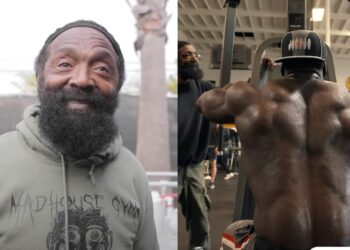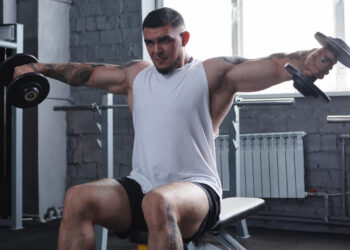Form definitely matters when working out, but are you getting too hung up on perfect form all while missing out on gains you could be seeing by not looking at it in isolation. In this video, I’m going to show you how what some might interpret as bad form, could be exactly what is needed in your workout.
The form police are out in full force these days, particularly online, and they are there to make sure you do every single exercise perfectly. What is perfect form though? Is it when you do the exercise through a full range of motion exactly as it was originally drawn up? I can tell you this, range of motion is not really a major criteria for judging form. I’m not saying that you should not perform an exercise through its full range of motion if you are able to, but when not able, you should not be abandoning the exercise either.
For instance, there are two scenarios where lifting in an abbreviated range of motion is not just good but what is needed in order to resume what all would consider proper form. If you have a short-term injury that is making the performance of an exercise difficult but not impossible at the moment, sometimes the best thing you could do is not abandon the exercise but shorten the range of motion on it that you can perform pain free. By continuing to keep the joints moving and working within the pattern that you can do, with good form, you will find that your pain free range increases over time.
Likewise, a more chronic injury like elbow spurs can dramatically shorten the range of motion that you can do. That doesn’t mean that you should abandon all elbow extension movements. When CT Fletcher and I did our triceps gauntlet workout, some were saying that CT wasn’t using good form. What they were pointing out was that he wasn’t fully extending his elbows. That does not equate to bad form. That is an abbreviated version of the rep for the purpose of working within the available range.
Level Up Your Fitness: Join our 💪 strong community in Fitness Volt Newsletter. Get daily inspiration, expert-backed workouts, nutrition tips, the latest in strength sports, and the support you need to reach your goals. Subscribe for free!
On the other hand, abbreviating your range of motion for the purposes of inflating your ego and lifting weights that you simply cannot handle is not a good idea and is not productive. You are much better off taking a weight that you can handle and taking the exercise through its complete range of motion without compensation. That is the key. Without compensation. If moving the heavier weights comes at the cost of calling on muscles that should not be involved in the exercise in the first place, you are not doing yourself any favors.
Finally, depending on the goals of your training and the purpose of a particular exercise, you might confuse something for bad form when it is actually perfect for what you are trying to accomplish. A cheat curl for your biceps is not about executing perfect concentric form on the lift! The portion of the lift that is being stressed here is the eccentric or lowering phase. You can cheat the weight to the top using some momentum but you must lower the weight under control.








